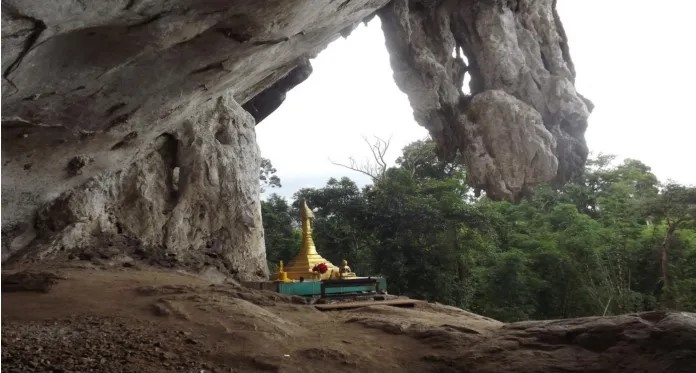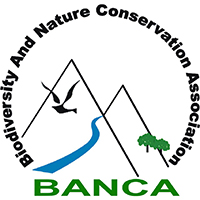လေညာသစ်တောကြိုးဝိုင်းအတွင်းရှိ ဘုရားထံ ထုံးကျောက်တောင်ဂူ ထိန်းသိမ်းခြင်း စီမံကိန်းကို ဘုတ်ပြင်းမြို့နယ် တနင်္သာရီတိုင်းဒေသကြီး တွင် ဇီဝမျိုးစုံမျိုးကွဲနှင့် သဘာဝ ထိန်းသိမ်းရေး (BANCA ) မှ ဇူလိုင်လ ၂၀၂၃ ခုနှစ် မှ ဒီဇင်ဘာလ ၂၀၂၄ ခုနှစ် ( ၁၈ လ) အတွင်း ဒေသခံ ပြည်သူများနှင့် ပူးပေါင်း ဆောင်ရွက်လျက်ရှိပြီး Critically Endangered Partnership Fund (CEPF)/ IUCN မှ ပံ့ပိုးပေးခြင်း ဖြစ်ပါသည်။

မြန်မာနိုင်ငံတွင် Karst ဧရိယာမှာ ကီလိုမီတာ ၈၀,၀၀၀ ရှိသည်။ Karst အများစုသည် ရှမ်းကုန်းပြင်မြင့်ပေါ်တွင် တည်ရှိပြီး မြောက်-တောင်သို့ ကီလိုမီတာ ၁၅၀၀ ကျော် ရှည်လျားသော ထုံးကျောက်တောင်ကြောများသည် မြိတ်ကျွန်းစုရှိ တောင်ဘက်သို့ သွယ်တန်းထားသည်။ မြန်မာနိုင်ငံရှိ karst ဇီဝမျိုးစုံမျိုးကွဲများဆိုင်ရာ အသိပညာမှာ အားနည်းနေဆဲဖြစ်ပြီး ဤမျှဆန်းကြယ်ပြီး ထူးခြားသည့် ထုံးကျောက်တောင် ဂေဟစနစ်များသည် ခြိမ်းခြောက်ခံနေရသည်။ ခြိမ်းခြောက်ခံနေရသည့် လှပသည့် ထုံးကျောက်တောင်၊ ဂူများနှင့် ၎င်းတို့တွင် နေထိုင်သော တောရိုင်းတိရစ္ဆာန်များကို ဖော်ထုတ်ရန် မြန်မာနိုင်ငံတွင် သုတေသနများ ပြုလုပ်ရန် လိုအပ်ပါသည်။ လှိုဏ်ဂူစစ်တမ်းများနှင့် မြန်မာနိုင်ငံရှိ Karst နှင့် လိုဏ်ဂူများကို ဇီဝဗေဒဆိုင်ရာ သုတေသနပြုခြင်းသည် အဖိုးတန် karst ဇီဝမျိုးစုံမျိုးကွဲများကို ရေရှည်တည်တံ့ခိုင်မြဲစွာ အသုံးပြုရန်နှင့် ထိန်းသိမ်းရန်အတွက် အရေးကြီးသော အသိပညာများ ဆည်းပူးခြင်းနည်းလမ်းများဖြစ်သည်။ မြန်မာနိုင်ငံတွင် သဘာဝ အရင်းအမြစ်များကို ကောက်ပဲသီးနှံနှင့် စိုက်ပျိုးရေးအတွက် မြေအဖြစ်သို့ အလျင်အမြန် ပြောင်းလဲလျက်ရှိသည်။ အချို့သောဒေသများ (ကရင်၊ မွန်၊ တနင်္သာရီ)ရှိ ထုံးကျောက်တောင်များနှင့် ၄င်းတို့၏ ဂေဟစနစ်များသည် တောရိုင်းတိရစ္ဆာန်များနှင့် ဇီဝမျိုးစုံမျိုးကွဲများ ရှင်သန်နိုင်ရန် ထောက်ပံ့လျက်ရှိပါသည်။ ၎င်းတို့သည် karst တွင် နေထိုင်ကျက်စားသော တောရိုင်း တိရစ္ဆာန်များထက် များစွာပို၍ ခိုအောင်းနေသော ဇီဝမျိုးစုံမျိုးကွဲများ၏ အရေးပါသော အပိုင်းများဖြစ်သည်။ သို့သော် ၎င်းတို့သည် သဘာဝအရင်းအမြစ်များနှင့် ဘာသာရေးဆိုင်ရာ ရည်ရွယ်ချက်များအတွက် လူသားတို့၏ အလွန့်အကျွံ မှီခို ပြီး ခြိမ်းခြောက်မှုအောက်တွင် ရှိနေကြပြီး ထိန်းသိမ်းစောင့်ရှောက်ရန် အထူး လိုအပ်ပါသည်။
Supporting community conservation of Phayartan Limestone Karst in Tanintharyi, Myanmar.
Project Summary

BANCA has been empowering local communities to engage in conservation of low land forest and management of biodiversity conservation in Lenya and Ngawun Reserve Forest, Tanintharyi Region over the past 5 years. In this experience we found that the limestone Karst at Phayartan, north of the Lenya Reserve Forest the expansion of religious buildings in Phayartan Karst and the construction of pagodas inside the cave. Cutting down forests and expanding cultivated lands such as Betel net plantations, were found and lack of the knowledge of the ecosystem Karst in local communities around Phayardan Karst. Phayartan Karst area is on the south-west direction of 27 village and exists in the Lenya Reserved Forest. Lenya, Pyi Gyi Mandai, Yadanapone, 14 mile and 26 miles are surrounded villages from Phayartan Karst area. Conservation of Phayartan Karst will be conducted from March 2013 to August 2024. The project will focus on Strategic Direction 4 (Empower local communities to engage in conservation and management of priority sites) and to meet Investment Priority 4.2 and 4.3. This will be achieved through the participation of local communities and local conservation groups in management of Karst ecosystem. Phayartan Karst conservation will be initiated by engaging and empowering of local communities and local conservation groups through increase the awareness of vulnerability and ecosystem services of Karst ecosystem, strengthen the Karst education in LCGs and local CBOs and providing the recommendation of Phayartan Karst conservation planning. BANCA will encourage men and women equally to participate in stakeholder consultation for the conservation of Karst area and facilitate equal representation of men and women in natural resource management forums. The project will galvanize interest in protecting the Karst ecosystem and build on the pride of the presence of the Phayartan Karst in Lenya Reserved Forest.
Project Background
Myanmar contains 80.000 km2 of Karst. This is the second largest Karst area in Southeast-Asia after Indonesia (Day & URICH 2000). Most of the Karst is located on the Shan Plateau, with limestone ridges stretching North-South over 1500 km down to its southern extension in Myeik Archipelago. The knowledge on karst biodiversity in Myanmar is still poor and further research is needed to unravel this intriguing and unique threatened landscape and it habitats. Karst mapping, cave surveys and biological research of karst and caves of Myanmar are ways of acquiring knowledge crucial for sustainable use and conservation of precious karst biodiversity. In a country with high demand for agricultural production, natural habitats are hastily being converted to crops and land for agriculture. The rocky nature of karst in some regions (Kayin, Mon, Tanintharyi) prevents this process and enables biodiversity to thrive in secluded islands of natural habitats. These are the important arcs of biodiversity, harbouring much more than just karst adapted fauna. However, due to the resources they hold and aesthetic value of its peaks for religious purposes, they are under threat from human development and need special action to be conserved.
BANCA has been empowering local communities to engage in conservation of low land forest and management of biodiversity conservation in Lenya and Ngawun Reserve Forest, Tanintharyi Region over the past 5 years. In this experience, we found the limestone Karst at Phayartan, north of the Lenya Reserve Forest. Phayartan limestone is located in Lenya Reserved Forest and is still a little known place in Myanmar. The limestone area, Phayartan Karst is surrounded by the villages and buildings of monastery. One monastery in Karst with 50 acres of forest land is approved by Forest Department. And also along Phayartan Karst and Koe The Luu village boundary there have remaining one or two small karst that was found in former time. The limestone area provides a nesting place for 11 species of Hornbills in Lenya Forest. In search of food, Hornbill in Lenya forest often forage mostly in the vicinity of Phayartan Karst, where there are abundant fruits trees. Phayartan Karst has led to become important refuges for species which were once more widespread,

